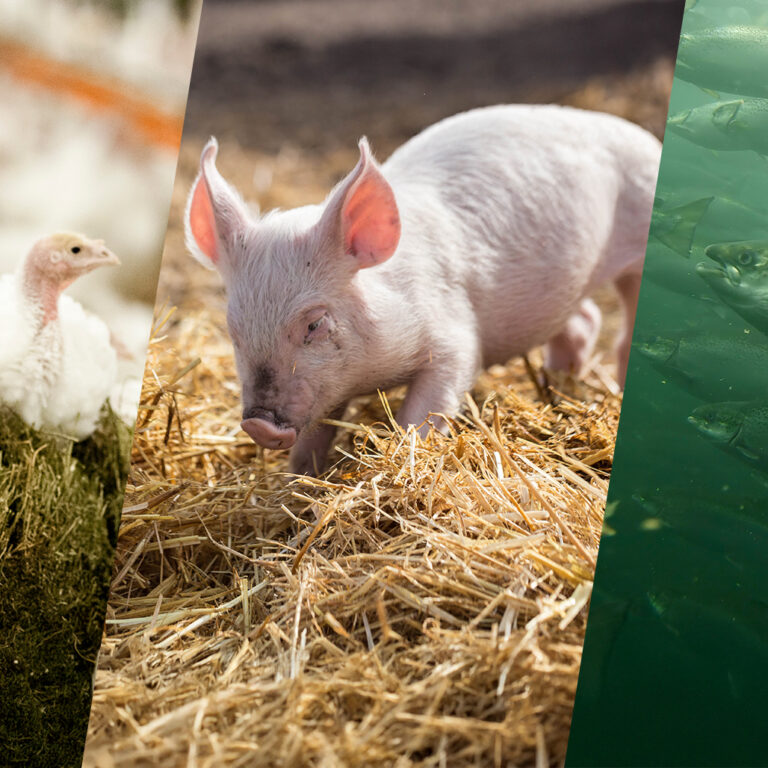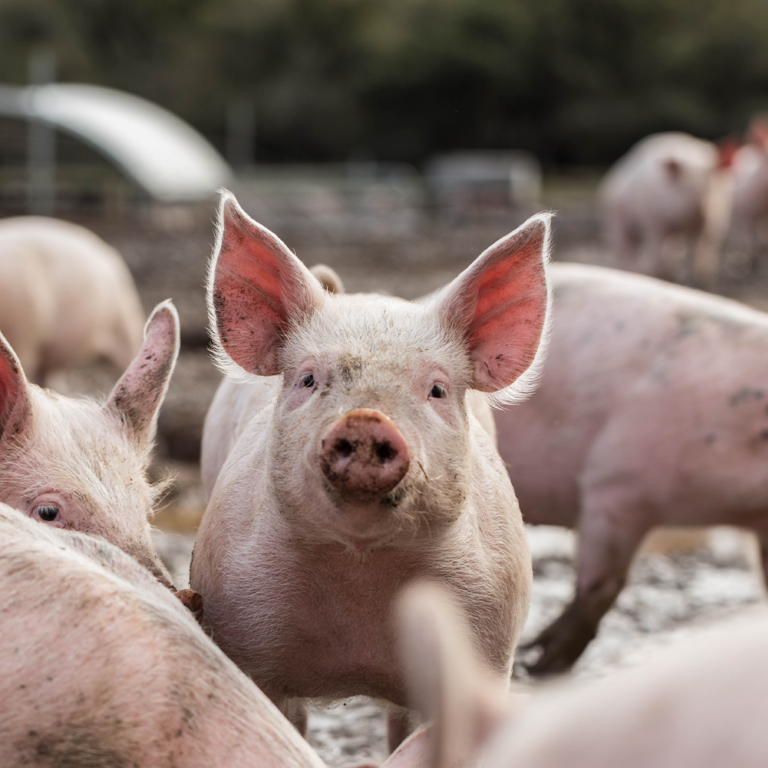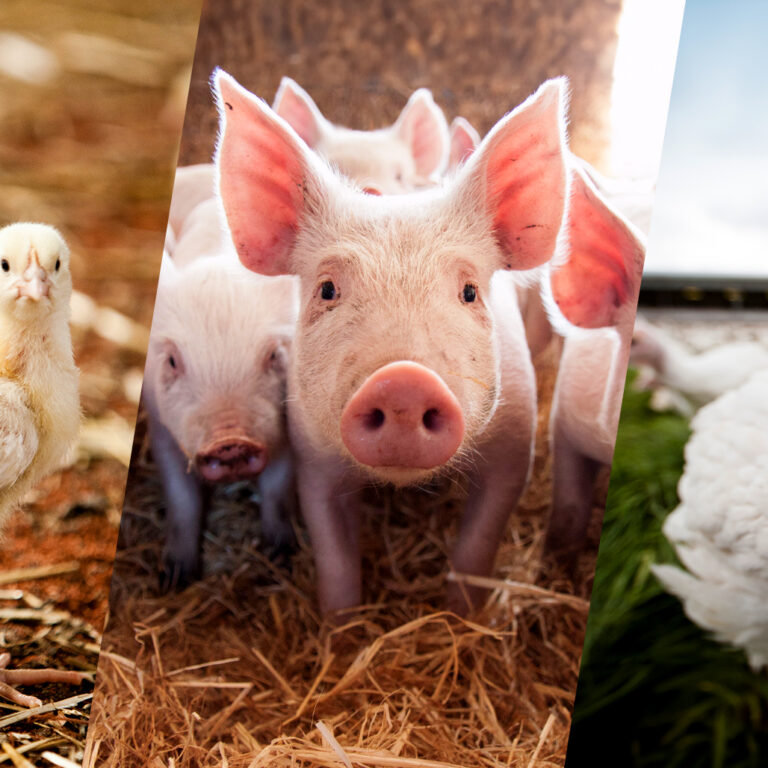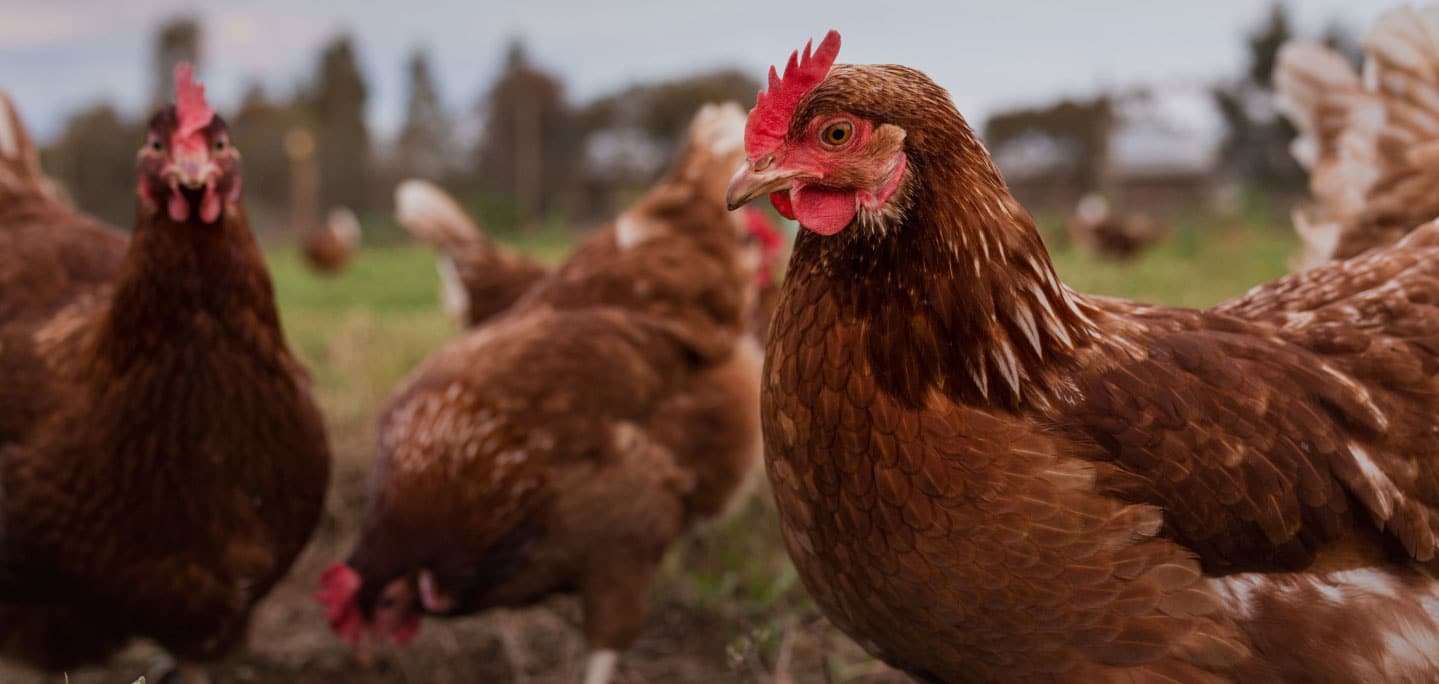Being an educated consumer and choosing higher-welfare products is just one way in which Australians can improve conditions for farm animals and support farmers raising animals to better welfare standards. The choices we make and the products we buy are a vote for the system that produces them, and Aussies are increasingly sending the message they want higher-welfare products from farms that prioritise better animal welfare.
One area of ongoing concern for Aussies is pork, and people particularly want to know how to purchase pork that is higher welfare. Like with egg-laying hens, the vast majority of pigs reared for pork in Australia are kept in barren conventional systems, with a smaller percentage in outdoor systems. Unlike eggs, pork products aren’t generally required to clearly label the type of farming system, which is a big problem – but there are some fairly consistent terms you can look for, that are used that describe how pigs are reared.
Here’s how to make sense of pork labels to help you choose higher welfare:
Identifying higher-welfare pork products
All fresh pork sold in Australia comes from pigs that are farmed in Australia. What consumers may not realise is that many pork products such as processed ham, bacon, deli meats and pre-cooked products such as pulled pork are imported, most commonly from the US, Canada, and some European countries.
Why does this matter? Pig welfare standards vary greatly between countries and pigs are often not raised to the same standard overseas. Although Australian conventional production of pork isn’t entirely good for pig welfare, there are attributes that put it ahead of North American production.
The Australian pork industry has phased out sow stalls and now around 80% of sows (mother pigs) are housed in groups during their pregnancy. However, most sows are still confined in narrow farrowing crates during and after the birth of her piglets.
In Australia, Country of Origin Labelling (CoOL) has also been introduced, requiring all businesses selling packaged food products to ensure packing includes a product label stating the percentage of Australian ingredients and the country of origin of those ingredients. Be sure to check the bar to see what percentage of ingredients are Australian, if its low, it’s unlikely the pork is Aussie grown.
RSPCA Approved
When you see the RSPCA Approved certification on pork, this means the pig has come from a farm that meets the RSPCA Approved Farming Scheme’s detailed and publicly available Standard for pigs – and that the farm is regularly assessed to make sure the Standard is being met.
The RSPCA Standard for pigs has 322 requirements on farm and 88 at slaughter. Whether an indoor, outdoor-bred or free-range farm there is a focus on providing for pigs’ behavioural and physical needs. Sow stalls, traditional farrowing crates and painful husbandry procedures (such as tail docking and teeth clipping) are not allowed under the RSPCA Approved Farming Scheme at all.
Pig farms with RSPCA Approved certification are assessed twice a year and abattoirs once a year by specially trained RSPCA Assessors. Any brand marketing their product as RSPCA Approved also undergoes traceability assessments by the RSPCA to verify the products supply chain.
Coles has long been working with the RSPCA Approved Farming Scheme on pig welfare, and excitingly all Coles free-range pork is now RSPCA Approved and available nationally.
Free range
Free-range pork comes from pigs born and raised with free access to outdoor areas or paddocks with vegetation, and the freedom to move, forage and socialise. Sows are not confined to traditional farrowing crates or sow stalls and have access to a farrowing hut to nest with their piglets.
It’s important to understand however, that a free-range housing system does not automatically mean higher welfare – how the pigs are raised, handled, kept and managed is also crucial to achieving better welfare.
Outdoor bred
Not to be confused with free range, this label is used to signify pigs that have been born in a free- range environment but then subsequently raised indoors. Outdoor-bred pigs may be raised in enriched indoor systems with large open sheds and comfortable straw bedding, or in small pens with concrete floors in more conventional farming systems.
From the label alone, there is little way of knowing, so, gathering further information from the brand is a good way to find out more.
Sow stall free
‘Sow stall free’ is the term used to define pigs that have been born from sows that are group housed during their pregnancy. While the growth of sow stall free pork is an important development, the label of ‘sow stall free’ alone does not indicate higher-welfare production.
Sow-stall-free farms still confine the sow to a farrowing crate prior to and for the weeks following the birth of her piglets. In a farrowing crate, a sow can only stand up and lie down. She can’t turn around or engage with her environment. Sows are strongly motivated to seek a nest site and build a nest before giving birth and not only can they not to do this in a farrowing crate, but a sow can’t interact with her piglets. Piglets born in sow-stall-free systems are still raised in barren intensive systems, often with no enrichment or bedding. Painful husbandry practices such as tail docking or teeth clipping can also still be used.
Not sure if your pork stacks up?
Here at the RSPCA, we actively engage with the pork industry and producers to encourage uptake of higher-welfare farming practices. We welcome the opportunity to talk with forward-thinking producers. So, if you have a favourite pork brand that isn’t RSPCA Approved, get in touch with them and let them know you would like to see them achieve RSPCA Approved certification.
Interested in reading more? Where can I find RSPCA Approved bacon? , What a pig wants, and what a pig needs or How a supermarket can lead the way in improving pig welfare







3 Comments
3 responses to “Pork Labelling: How to Choose Higher-Welfare Pork”
Thank you for this information, which clearly describes the different pork production systems so that consumers are not misled by the labelling.
What about ‘Enhanced Pork” why is this not covered here?
Is there any way of knowing if there is a difference in the way pigs are slaughtered?